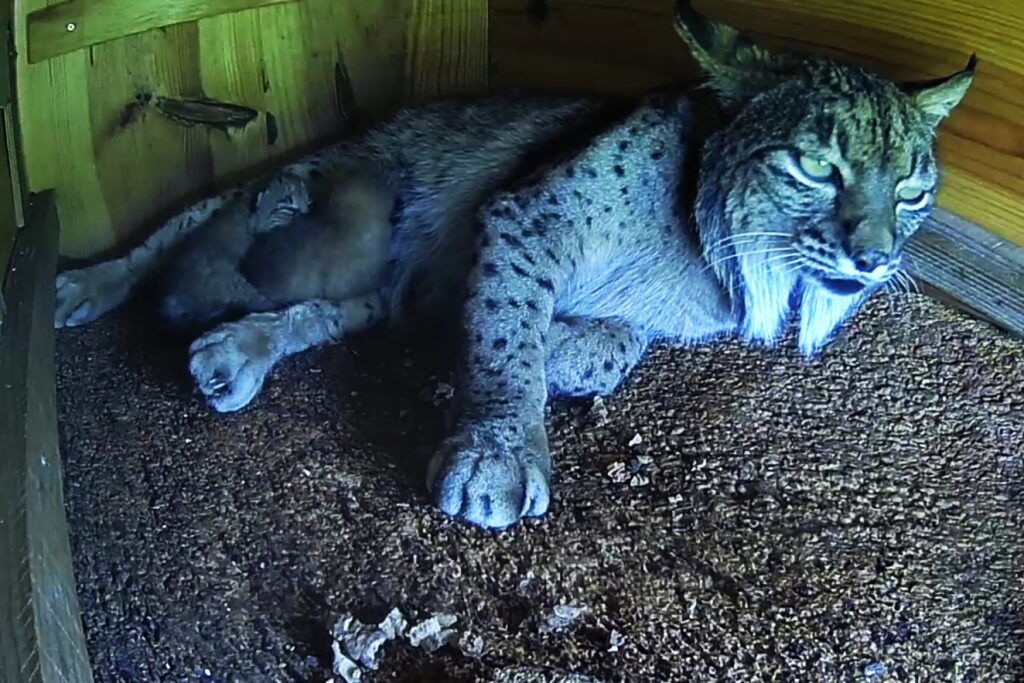There are eight more small “Algarvian” Iberian lynxes, born this year at the National Iberian Lynx Reproduction Center (CNRLI), in Silves. In 2023, the Algarve center once again had a 100% survival rate for new offspring, until weaning.
These new lynxes are offspring of three of the six couples that were established at the end of 2022, at the CNRLI.
«Although they all copulated, only the females Queratin, René and Flora were successful, obtaining a total of 8 offspring», revealed the Institute for Nature Conservation and Forests, which manages the center and the reproduction program of the lynx. Iberian, in Portugal.
“All the young are doing well, having already passed the period of fights of young that characterizes the species. Era and Fresa appear to be in the post-breeding period. It is the third consecutive breeding season in which the CNRLI achieves 100% chick survival until weaning», he adds.
In the first birth, which took place on March 18th, three cubs were born, all males, the result of pairing the female Keratin with the male Jerte.
«It is the second birth of Keratin at the CNRLI, having had another three offspring in 2022, all of them reintroduced into nature. It is also only Jerte's second litter at the CNRLI, having produced another two offspring in 2017, meanwhile participating in two attempts at artificial insemination in 2019 and 2020», describes the ICNF.
The second birth, which took place on the 28th of March, was that of René, "an inexperienced 3-year-old female that he bred for the first time this year".
René gave birth to three cubs – two females and one male – whose parent is Hermes. «Despite her inexperience, she managed not only to carry the pregnancy to term but also to manage the period of fights between offspring successfully. This is already the fifth litter of Hermes at the CNRLI, having produced a total of 17 pups since its arrival at the end of 2016».
The third calving took place on March 30th – the female Flora had two cubs, both males, whose father is Quiñones.
«Flora started her reproductive life in 2011 at the CNRLI, had seven litters and participated in an attempt at artificial insemination. She had 19 offspring, most of which were reintroduced – Jacarandá, the first female released in the Guadiana Valley; Kentaro and Khan among other “travelling” lynxes», says the ICNF.
Of the 19 pups that were born, only two were lost, “an extraordinarily high success rate. Given his age and genetic representation, this was probably his last litter. As for Quiñones, a 4-year-old male, this is his second litter at the CNRLI out of a total of four offspring produced».
Era and Fresa females appear to have reached the end of their reproductive lives. Despite having copulated, they did not become pregnant, «which appears to be normal according to data from the Ex Situ Conservation Program for the Iberian Lynx».
Era, a founding female who came from the wild at the age of 15, participated in 13 breeding seasons, having produced a total of 10 offspring in five litters, with only four surviving weaning. Pomã, her daughter, will represent her genetic line in the breeding program in the future.
Fresa, 14 years old, may still have one more breeding season – it will depend on her physical condition and genetic importance in 2024. your clinical situation. Even so, she participated in 2008 breeding seasons having been pregnant in the previous 2009, producing a total of 9 offspring, 8 of which survived – an amazing success rate ».
Of these, 17 were reintroduced into the wild, a substantial contribution to the recovery of Iberian lynx populations in the wild. «Having been – or not – his last breeding season, the CNRLI and the conservation of the species in general owe him an enormous gratitude».
The female Jabaluna, this year paired with the male Galeno, did not become pregnant, but will continue her reproductive life in the Iberian Lynx Ex Situ Conservation Program. She has already had 4 litters at CNRLI, a total of 13 pups (8 of which survived up to 6 months).
Since it went into operation at the end of 2009, 162 offspring have been born at the CNRLI: 127 survived until weaning and 103 were introduced into the wild.



















Comments